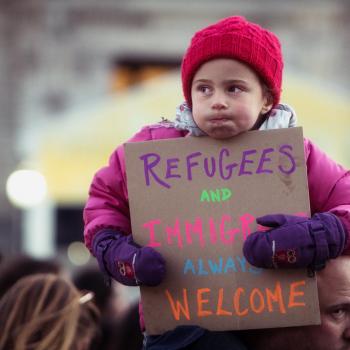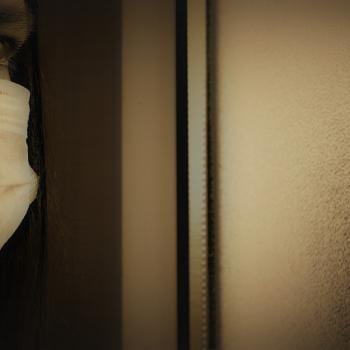(image credit: pixabay)
There’s been a lot of talk about intersectionality lately, not only in academic circles but in the mainstream corporate and social media. The term, coined by legal professor Kimberlé Crenshaw, refers to the way in which discrimination happens along a number of intersecting lines of power, privilege, and prejudice, and was initially introduced to talk about the particular prejudice directed against black women. The term is popular in identity politics, but has to do with social justice, too, since oppressive narratives and systems reinforce one another and reinforce injustice. Elisabeth Schussler Fiorenza’s term “kyriarchy” is relevant here, indicating as it does not the male-female power binary suggested by “patriarchy” but a web of interconnected hegemonies of which male-female is only one.
(Yes, a lot of academic jargon in the above, but this jargon serves a purpose of conveying specific concepts. For those who already practice western philosophy, it’s very heavy with jargon anyway: metaphysics, substance, a priori, transcendentals, heteronomy, etc. And, Catholics, bear in mind that we’ve enshrined Aristotelian jargon in our theology. I’m interested in finding alternative routes for discussing these topics, though I’ll save a conversation about the problems of academic discourse for another post).
Intersectionality may be a relatively new term, but in practice it has been around for quite a while. From early on in the feminist movement in western cultures, there has been a tendency for the movement to be dominated by white middle-class women, often to the exclusion of the poor or the racially other. A perfect example of this is Virginia Woolf’s A Room of One’s Own. Woolf’s contrast of the opulent meal at the men’s college with the dingy one at the woman’s college is relevant, but focused exclusively on a well-off middle-class culture, as though England weren’t teeming with working women for whom the woman’s college dining experience would have been a luxury. The negative reaction of many white feminists to Sojourner Truth’s “Ain’t I a Woman?” speech, in 1851, shows just how exclusive the movement was.
The images and rhetoric associated with female empowerment also subtly reinforce certain kyriarchical structures of ableism and beauty politics, and even of militarist masculinity. The “strong female character” is invariably attractive, in excellent condition, and a badass fighter. Kudos to George R.R. Martin for showing the limitations of the hot warrior princess myth, for showing the female warrior as a subject, not a fetishized object. Female empowerment also draws on a negative version of sex-positivity according to which the sexually active woman is necessarily happier, more fulfilled, and more in tune with nature than the virgin or celibate or asexual. Sexual female empowerment necessarily favors the young, the healthy, the thin, and those whose curves are in the “right places.”
Intersectionality involves recognizing that there are many different types of prejudice, that not all systems of oppression are the same, though some follow similar patterns. It means accepting a polyphony of narratives instead of placing them in competition with one another. It is entirely possible to support the goals of Black Lives Matter, and to see deep entrenchment of white supremacy prejudice, while at the same time recognizing that poor rural whites are subjected to bigotry and structural oppression of a different kind. It means that, in our efforts to advance women’s rights, we don’t do so at the expense of any other marginalized group (the disabled the old, the poor, the unborn).
This ought to be exactly the direction that Catholic thought on social issues should take. If we truly are the universal church we can’t confine ourselves to promoting the ends of any one cultural group. Catholicism should never be appropriated to enforce the ends simply of American culture, or western culture, or masculine culture, if these ends involve the exclusion of others. For this reason Catholic rhetoric about virtue should avoid conventional images promoting ideals of gender identity particular to one culture. Why, for instance, does the “modesty” campaign only present pictures of young, pretty, thin, happy, healthy white girls in vaguely 1950s dress? Are black women necessarily immodest? Are older women irrelevant simply because we’ve passed our expiration date? Are depressed women of less value since they’re not radiating limpid joy from every perfect pore? Do indigenous women have to ape their imperial colonizers in order to present proper Christian virtue? Even the idea of “being a lady” perpetuates white privilege, since in Western culture ladyhood has always been associated with coming from the right family, and being the right race. Is our concept of “family values” based too much on a specific ideal of white western family and white western family roles? Have we idolized private property (of well-off people) so that we value it more than we do lives (of poor people)?
These are only a few ways that intersectional thought can help to enliven our sense of catholicity, and correct the ways in which we might be subjugating our faith to power politics. I’m sure you can think of other ways, especially if you come from a background different from mine, and have a different story to tell.












